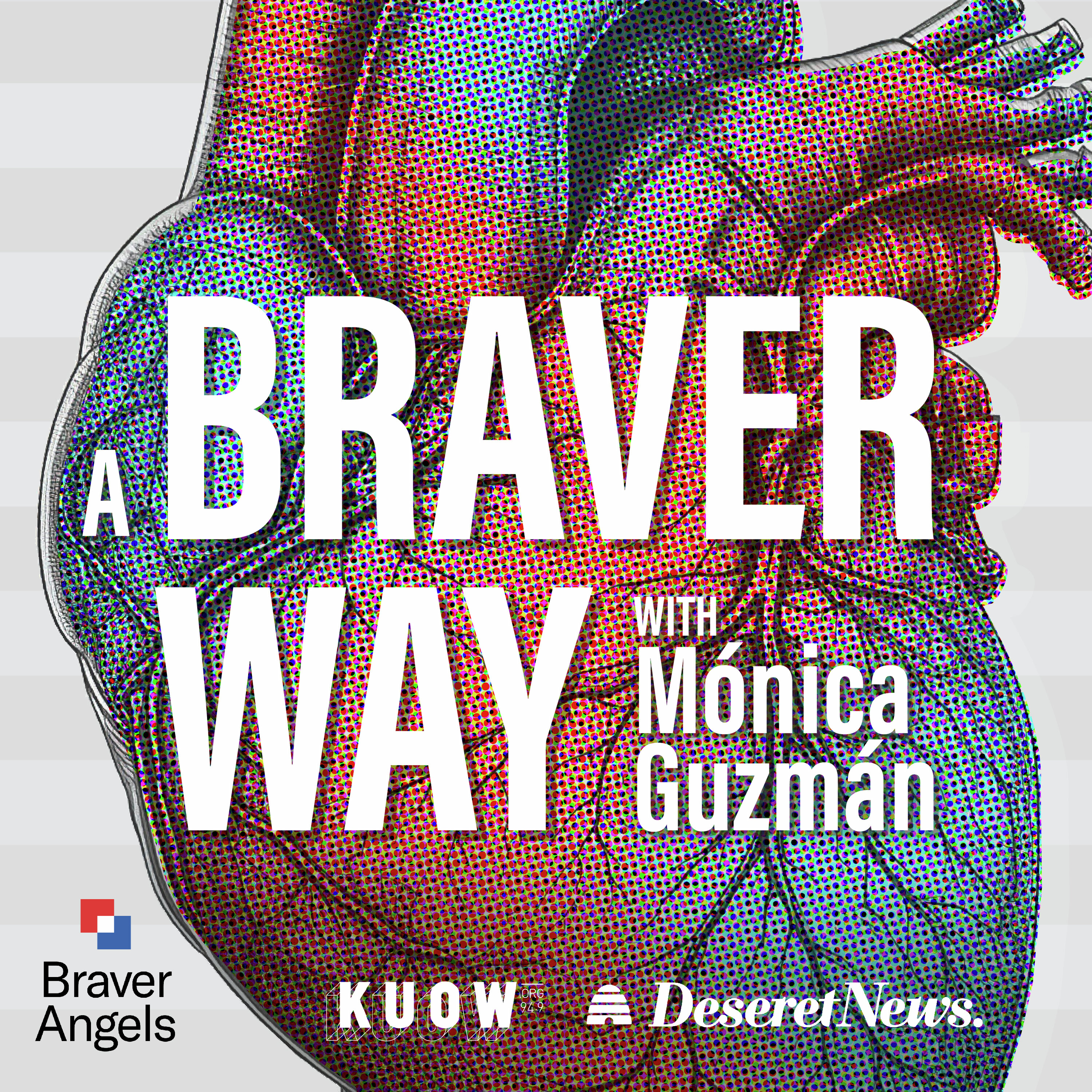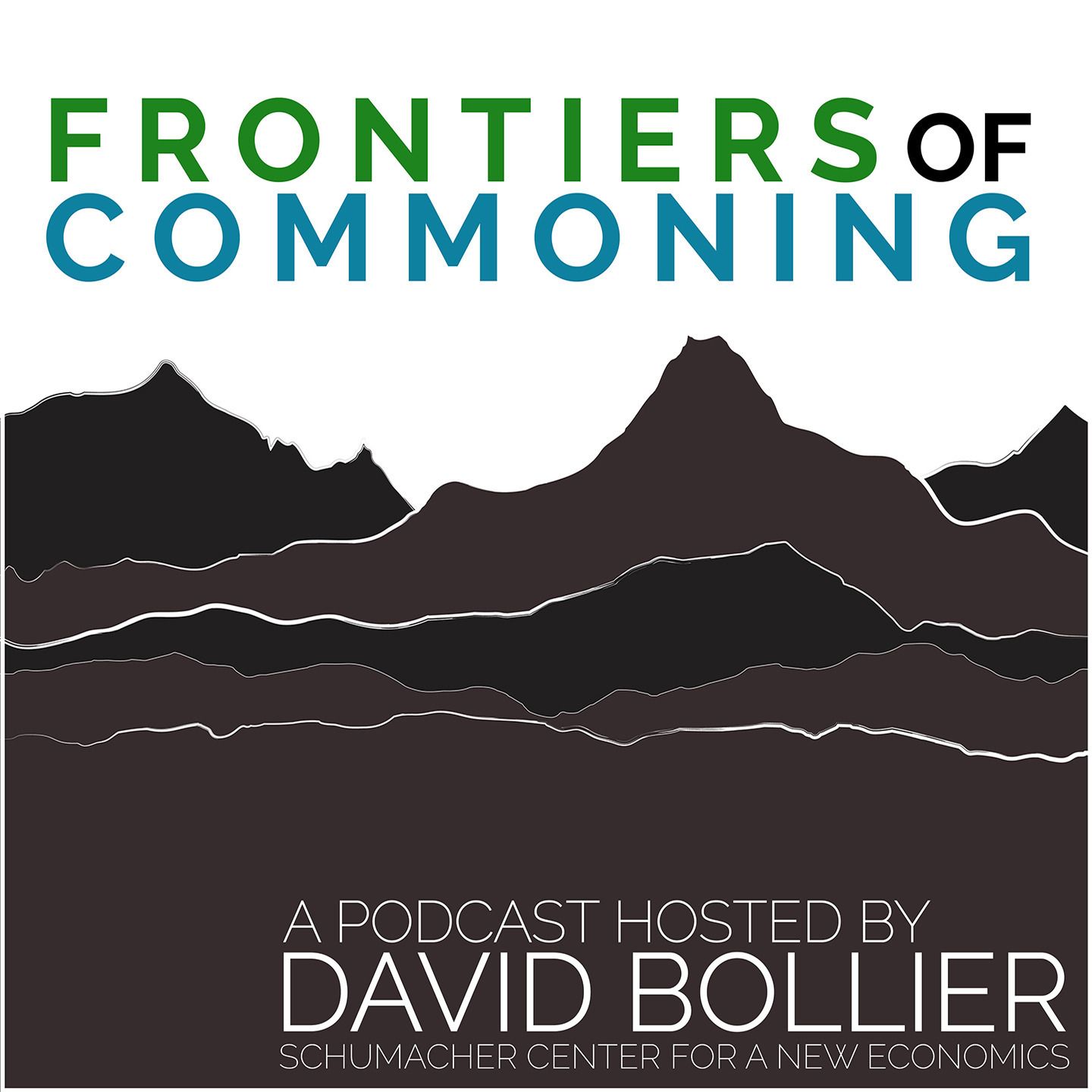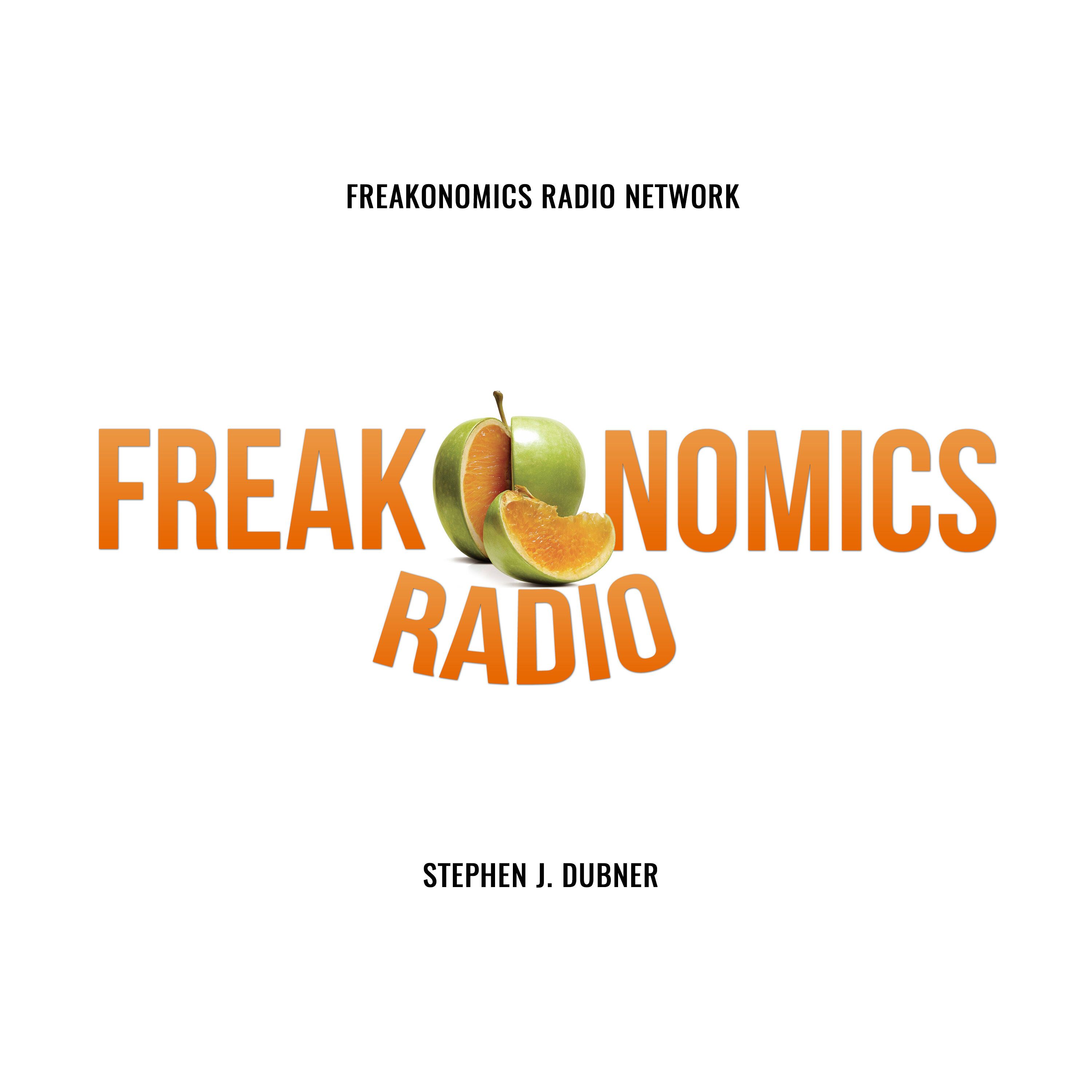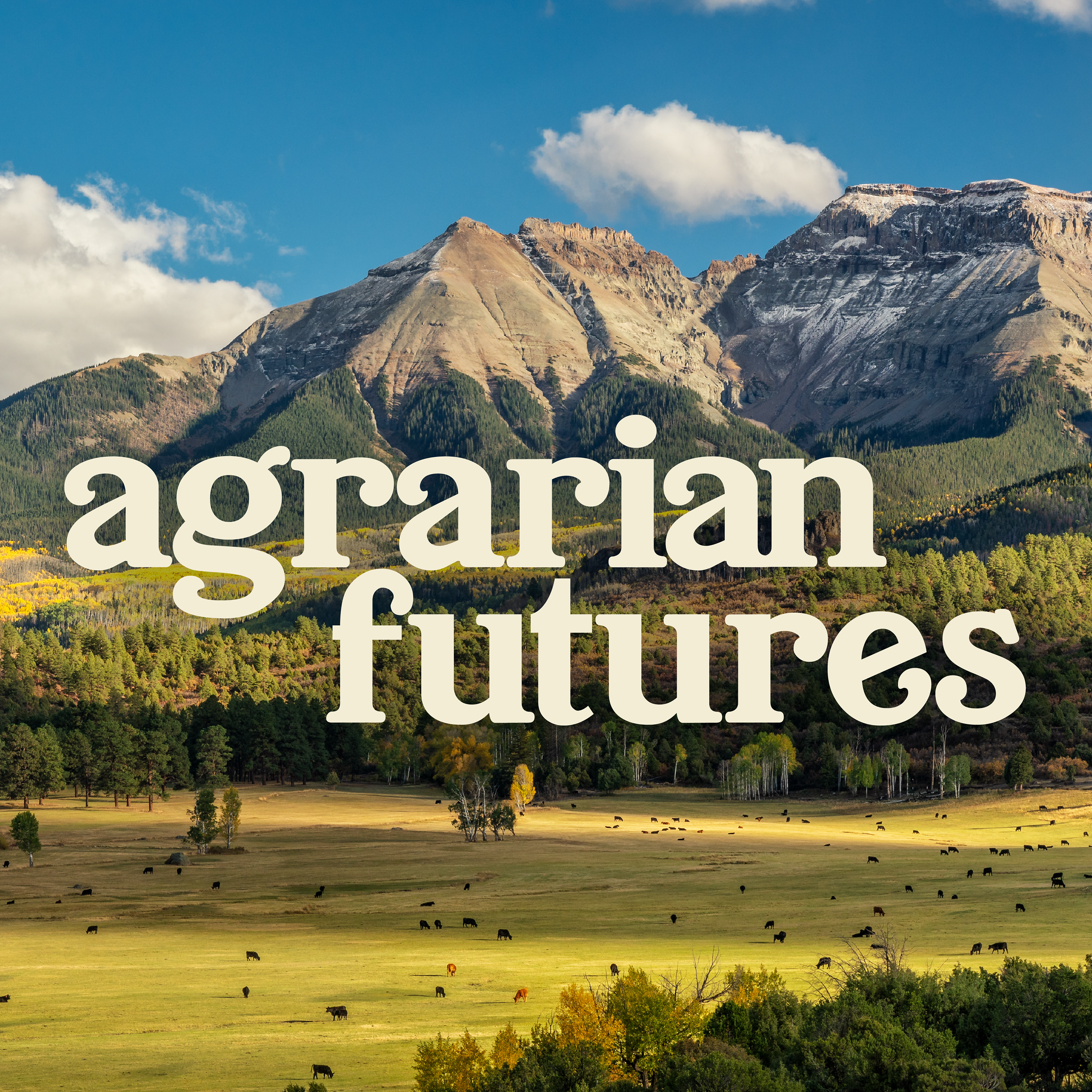
The RegenNarration Podcast
The RegenNarration podcast features the stories of a generation that is changing the story, enabling the regeneration of life on this planet. It’s ad-free, freely available and entirely listener-supported. You'll hear from high profile and grass-roots leaders from around Australia and the world, on how they're changing the stories we live by, and the systems we create in their mold. Along with often very personal tales of how they themselves are changing, in the places they call home. With award-winning host, Anthony James.
The RegenNarration Podcast
The Land Whisperer, Part 3: From the woodland labryrinth to the Farmhouse that replaced McDonald's
Welcome to part 3 of this special on-location recording with the 'land whisperer', Patrick MacManaway, in Burlington, Vermont.
ICYMI, the full episode was played more than most in its early days, but given it was a little over two and a half hours in length, I also wanted to offer it in distinct parts, for those of you who prefer to listen to it that way. There have been plenty of takers too, so I'm glad this suited a bunch of you.
We pick it up here where part 2 ended, as we wound up at the public stone circle in Burlington, Vermont, to head to a woodland labyrinth that again Patrick was pivotal in creating.
En route, we hear some of the great story of what's happening on the land on which the labyrinth has been set up. And on arrival, we venture into the woods, exploring the relevance and power of the labyrinth over time, and how else we can restore our internal compass in the world.
Then we head out for one more stop - a surprise venture to the farm-to-table enterprise that replaced McDonald's downtown.
The fourth and final part with Patrick, back in the garden at his place for a grand finale of sorts, will be out in a couple of days.
Title image by Anthony James. For more behind the scenes, and to help keep the show on the road, become a supporting listener by one or more of the options below.
Thanks for listening.
Music:
The RegenNarration playlist (music chosen by my guests).
Join us for a journey on the Murray River, Australia, for the first Confluence 2026.
Pre-roll music: River, by Onyx Music (sourced from Artlist).
The RegenNarration podcast is independent, ad-free and freely available, thanks to the generous support of listeners like you. We'd love you to join us.
Become a paid subscriber to connect with your host, other listeners and exclusive benefits, on Patreon or the new Substack.
Or donate directly via the website (avoiding fees) or PayPal.
While you can also visit The RegenNarration shop. Come to an event. And please do share, rate and review the podcast.
Thanks for your support!
and I like to observe that the hobbits were the peaceful farmers and they were just trying to keep things nice in the shower, and so all of the trouble around them with the great and mighty was like a storm that washed through, and then they went back to growing vegetables and smoking their tobacco.
Speaker 2:Brilliant.
Speaker 1:On that note, let's head to our next stop, okay, so I'm going to take you next to a woodland labyrinth. So we are arriving into the land of the Meach Cove Trust and this is a 600 plus acre estate, put together originally in the early 1900s and now it hosts an interfaith community church, very beautifully poised, looking out with the same lake view as this town circle that we've been on. And when the current owners purchased this land 25 years ago, they had me do an extensive amount of work on the land and the buildings and bring it into a nice and crisp and clear and fully engaged, but engaged, but one of the things that they wanted to support their church, which is in these buildings. This is the sanctuary, which is built as a squared circle with golden ratio elevations and solstice to solstice windows, same as the solstice to solstice stones.
Speaker 1:So, but one of the things that they wanted as part of their their ritual complex, as it was a labyrinth which you may be familiar with labyrinths already, they're ancient, apparently universal, meditative walking paths, paths, and we looked around and assessed quite a number of sites on the property and we decided on this rather charming woodland labyrinth. So now we're going into the woods. So the history of labyrinths goes certainly back 3,200 years based on historical record, but quite possibly much, much older and later than that, and the design that seems to be the universal is the seven-circuit labyrinth, sometimes called a classical Cretan labyrinth, but we find this design woven into baskets and rugs and blankets in the Native American culture here in North America.
Speaker 2:Is that right?
Speaker 1:We find the similar pattern on the plain of Nazca in Peru. We find them widely through Europe and Asia, and many of the oldest still existing ones are around the Gulf of Bothnia in Sweden and date from the Viking period. Oh yes, that was a squirrel.
Speaker 2:Yeah.
Speaker 1:I thought he was, but he was. He wasn't moving until he saw which way we were going. So again, is there a particular way you're engaged.
Speaker 2:He wasn't moving until he saw which way we were going.
Speaker 1:So again, is there a particular way you engage, so yes, with the sound of hay being mown in the background in the field adjacent. So there's a single walking path that enters here and then it continues around. If you number them from the outside one, two, three, four, five, six, seven and then a central area, the sequence of walking. It takes you three, two, one and then four, and then seven, six, five and into the uh, the center, and they can be used in many ways as a simple walking meditation, problem solving time to quieten the mind. Often in historical symbolism there's a goddess in the middle, and one of the associated myths is the myth of the descent of Inanna, who is a Mesopotamian grain goddess, yeah, and when she reaches the point of coming into her mature power as a goddess, she has to go and visit first with the Ereshkigal, who is queen of the underworld and a bit of a scary crone. So Inanna goes through seven gates, the seven turns in the labyrinth to access the underworld, and at each of the gates Nettie, the gatekeeper, takes from her rather symbolic items of clothing. There's a tiara, a necklace, a girdle. You can sort of follow the chakras being unveiled as the path goes into the labyrinth until finally she achieves the center of the labyrinth and is naked in front of a Reshka gal who slays her and hangs her on a meat hook for a season, as goddesses will, before bringing her back to life and, um, reanimating her, and then she comes back out of the labyrinth, putting all her things back on in sequence, and when she emerges she's now fully reborn into her full mature powers, having first been to that dark place of death and rebirth at that moment of transition in her womanhood. So there's a way that we can have a sense of going into the labyrinth of each layer, stripping away an outer veil of consciousness or worldly concerns until we're really at a still deep point of renewal and resource in the middle. That's a lovely way to use them. Another thing that's fun with these labyrinths is, although it's quite a journey around this one, where 80 feet in diameter, which is what's required to make each path wheelchair accessible, which was one of the remits on this one is that although it's a long walk around the middle, you can actually walk across this central threshold and go from the outside straight into the middle, and so sometimes, with retreats or extended sort of focus time, it's nice to walk winding into the labyrinth at the beginning and then step across that threshold so that energetically you're still in the labyrinth until at the end of the event you cross again into the very centre and wind out.
Speaker 1:I used to do week-long holistic medicine retreats with a gathering of people who came together every year for 20 years. We would make a beach labyrinth below high tide and walk into it at the beginning, and then at the end of the retreat we'd do another beach labyrinth below high tide and walk into it at the beginning, and then at the end of the retreat we'd do another beach labyrinth and walk out of it, and it was a way of sort of energetically intentionally bookending that this one. We had the naming and inaugural ceremony of coming into the world for my daughter when that was her time and her mum and I walked with her into the labyrinth and our friends gathered and there was singing and praying and speeching and then Heather and Ali and I stepped across the middle to come out. So we're in the labyrinth, we're there for life.
Speaker 1:The middle to come out, so we're in the labyrinth, we're there for life was just a way of embodying that shared journey that will end at its own time so they can be used in very many ways across the walls and you can go four paths in and out, holding hands with people going in the opposite directions. It's a beautiful thing to do. So we don't know of them as having any agricultural context. We don't know of them as having any agricultural context, but it's very much ritual in landscape and all of the original Gothic cathedrals had a labyrinth laid into their nave and I think at the turn of the 1900s there were still over 120 turf labyrinths in parish churches around the UK. So it used to be every church would have an outside labyrinth, typically turf cut, and so you'd have celebrations indoors and then you'd have celebrations outdoors and that was a bit like, you know, having sweat lodges or saunas. It was part of the annual and regular cycle of people connecting with themselves and with Source and the space.
Speaker 2:When you say churches, what churches would we be talking about when you say churches.
Speaker 1:What churches would we be talking about? These would have been certainly the Episcopalian ones. There's still one called Julian's Bower in Alkborough in Lincolnshire and several others, but most of them they didn't get maintained or they fell out of use. And there was quite a resurgence of interest in labyrinths, particularly in the 80s and 90s, and I helped put a shark-style labyrinth into an Episcopalian church just five miles from here. But they seem to have slightly waned in people's awareness again, or at least in a general sense.
Speaker 2:I'm curious with all this stuff, patrick and we talked before about so much good stuff coming on what's been your observation over your time in changes and shifts in people, their appetite, their practice and in agriculture, in these domains like cast a wide net on that what's been your observation of change and appetite for this stuff in people?
Speaker 1:I think it's. We get very excited about the things that we do, but it does look to be rather generational to me, and the things that our children grow up with become the norm for them, whereas it might have been quite unusual for us watching what happened with holistic medicine huge excitement in the 70s and 80s and you mentioned holotropic breath work, reflexology, aromatherapy, yoga, practices such as Reiki, tai Chi Qigong a huge groundswell of interest and now, a couple of generations later, it's hard to find anybody whose next door neighbor isn't a reiki master and who, yeah, you know yoga doesn't have yoga or, uh, some sense of of that.
Speaker 1:In fairness, I think in the 40s and 50s we were fascinated with tibetan. In the 40s and 50s we were fascinated with Tibetan culture. Prior to that, 20s and 30s, looking very much to Native Americans. And now I think the sort of equivalent is go to South America and engage with practices, mind-altering practices there, and the breathwork, I mean that's exploding. Yes, right now, I think and you mentioned epigenetics, aj I think you know it takes three generations, I think, for a thing to become really normalized and integrated. You do what your granny did or your granddad, and I think the seven generations is probably how long it takes for us to get really sophisticated and elegantly simple with a thing. Sophisticated and elegantly simple with a thing. So my parents were sort of pioneers, so in a certain sense I'm second generation in the culture. Grandmother was into it, but that was closed door stuff.
Speaker 1:But looking around at what's normal now, what we're exposed to the explosion of internet allowing us to listen, to learn from, observe practices from all over the world, and I think people are hungrier than they've ever been and the deconstruction of the human institutions in which we've held doctrinal religions, I think, as those deconstruct, or people are unsatisfied with the human elements of those I think we've got. A hungry population is literally soul searching for authenticity, for wholeness, for truth and for our fundamental reconnection. We've somehow become lonely on the planet as human beings. We've been told that we're the problem and that without us the planet would do fine. But in my experience, at least personally, any time I've connected and engaged with elementals, nature, spirits, there's been such a depth of welcome and warmth and support and guidance and encouragement that I simply everything that I was raised to, but also everything that I've experienced, reassures me that we are part of life on the planet and we have a very particular and sacred role.
Speaker 1:I don't know what other than human being has our experience of watching a sunset or a sunrise, what other incarnate beings are singing and dancing and playing violin? Maybe we've got a sacred duty of digging things up and moving them around. There's nothing else that does that, not to that scale anyway. Well, maybe the place gets to express and experience itself in a certain way uniquely, through the eyes and actions of people, because at the end of the day, we've had ice ages and dinosaurs and meteor strikes and volcanoes and mass extinctions. So it might be we should dial back our egocentric sense of power of actually being able to destroy a planet. We can certainly create ecocide and terrible, terrible land management and um environmental harm, but I think that's a very brief and unusual thing for people to do. Unusual thing for people to do.
Speaker 1:Actually, I think our nature is very connected and, historically as well, your intuition and instinct were your survival necessaries. We rely now on data and intellect, but if you can't perceive the presence of a saber-toothed tiger.
Speaker 1:Until you see it it's too late already. And we have mountain lions and bears in the woods here in Vermont and you know if there's one around and you don't want to see it. But you instinctively know and you can read nature because the birds are very quiet or they're making alarm calls or the forest has gone very still because nothing wants to move while that happens and the hair goes back up on the neck and the arms and you know there's a predator here and you know you want to move away. So that could be called irrational. I didn't hear it, I didn't see it. I know theoretically it could be here, but my body knows it's present. And if we couldn't find food, if we couldn't find water, if we didn't have that level of intrinsic awareness of landscape, you simply, you know, didn't make it till breakfast time tomorrow. So what used to be survival-level awarenesses, I think, have become a little bit redundant with our infatuation with linear cognition and technology.
Speaker 2:It's very interesting you say that I have heard almost the same words from people coming across this country, including in the very episode that's coming out today, which is on the buffalo restoration on the Great Plains another extraordinary story and he was describing the same thing, and that's even with the guy who's regarded as just about as good a buffalo wrangler as there is, that you will still feel that when it looks you in the eye and and, similarly, if there's something coming that you're, you need to be aware of, but you're not to your visual eye. And I heard the same thing from a man in south dakota who tracks mountain lions so he's engaged with them all the time, but found himself in a situation where it was above him, but he didn't know it, but felt it and got the hell out of there and came back and then confirmed what was I feeling? I was up there, oh my, you know. But this is true of a bunch of farmers obviously I've spoken to as well. It's partly how we've come together. And when I hear that, what I want to hear in your words is as much, your senses are alive and sure you don't necessarily want to have to walk into the presence of a jaw that would eat you to feel alive. But we don't have to. We can feel it in the agricultural spaces you dwell in and where we are right now.
Speaker 2:But to think then that that's what we've traded out for more secure, quote-unquote survival methods, that's a big price to pay and I and I guess then it does make sense of the loneliness, epidemics, the anxiety the you talked before, the grasping for the next bigger thing, because what else are you going to do If you've lost what actually triggers your living instincts? Your compasses, shut down, so you grasp, it makes. There is a logic in that that even that makes some sense of where we find ourselves. So sure, maybe we don't need this for survival, but the way things have got, I kind of think we do. Perhaps not your physical survival, but then when you look at chronic illness exploding, I think maybe we do for just straight up survival, need these instincts, we need the compass lest we be lost I think we do, and even in pure economics, if you get them, if you get them off, off camera, um, pretty much the the most successful investors are hyper-intuitive and hyper-instinctive.
Speaker 2:Yes, good point.
Speaker 1:I think George Soros' wife called him out at one lecture where he was extrapolating his investment theory and his wife said he just invests when his kidneys hurt. Yeah, interesting. I don't know what else he's up to, but I've certainly been impressed, including back to our military conversation, yeah, often the the people at the top of the tree are using this stuff all the time.
Speaker 2:Yeah, and I even hear about, I mean alan savory told me. I asked him and he said there is certainly more than once that intuition saved him from being shot on the battlefield, and it's not an isolated story, obviously. I was just curious on how he'd experienced it. Well, that hay cutter's got close to us. It has, maybe we should.
Speaker 1:That's our time to continue to move on.
Speaker 2:I think so, but wow, what a special place. All right, patrick. Sorry in a way, because the machine's left us now and this is now feeling a whole other level of beautiful and powerful Just listening to that. So sorry in a way, but we've got somewhere else that would be good to visit. So let's go there now, and en route you've got a bit of a story to tell.
Speaker 1:Yes, so Vermont gets settled mid to late 1700s and back in the day it was really the breadbasket of New England, really entirely agricultural state. 85% of the land was cleared for agriculture, huge amount of sheep as well as grain and fruit production. And then land opening up progressively in the west and the central sections of the country and changing agricultural economics meant that the small and often hilly Vermont farms were no longer economically viable and so most of the farmland was simply abandoned and forest is regrown and now again covers 85% of the land is now forested Wow. But when the farms were going out in the 50s there was a massive back to the land movement that came into Vermont and New Hampshire and New England. The nearings were kind of iconic of that period. So land was cheap and the alternative back-to-land community came here. And then the same thing happened again in the 1970s, where we got a huge influx of sophisticated, well-educated, often university graduates yes, so inexpensive land prices.
Speaker 1:In the 70s we got a whole sort of wave of what we'd refer to as the hippie culture People who wanted to drop out of mainstream and in their own way come back to the land. So Vermont found itself in an interesting position of being economically conservative and socially liberal and a lot of very interesting projects got rooted and anchored in Vermont. It became a haven for people concerned with food and alternative education. A lot of independent schools, strong presence of Steiner schools and that's changing gradually with changing political and economic circumstances, but we still do have this very strong body of very holistic-minded people who either themselves or their parents or grandparents, grandparents found their way to Vermont to live in a more land-based and independent kind of community, and so we've got a very strong slow food movement here, with a lot farm-to-table style restaurants, direct purchase from identified agricultural producers. We've got a couple of substantially dedicated Whole Foods supermarkets and on each tray of potatoes or sprouts or beans it tells us exactly which farm it came from, and so a lot of local vorisms.
Speaker 1:And then very smart integrated farmers who grow grains for local distilleries and then the spent mash goes back to feed cows and pigs. There's one facility in Hardwick where surplus whey from milk products is made into a very high quality wall and flooring, almost like a polyurethane Really A shellac. That's a really good one that's entirely made locally from waste products of the dairy industry. And then a lot of small-scale, multi-stacked farms that host community-supported agriculture. But they also have their open days and their burger nights and their berry picking days and we can go and take a picnic and listen to music while we pick our berries, and there's a real strong support for the local as well as the organic in the state. So although we're small, we're in a way quite flagship for integrated holistic agriculture.
Speaker 2:Yes, that story certainly reached Australia and I did a podcast out of Vermont, out of actually Montpelier, maybe four years ago now, with Jake Claro with the Vermont Sustainable Jobs Fund, I think it's called, but he was the manager of the what was it? Farm Paddock to Plate or Farm to Plate program or something of that nature, and that it was bipartisan support in this backed strategy for the state and all very interesting stuff. So that summed to a fascinating story.
Speaker 1:You mentioned to me where we're going now, to the heart of town where mcdonald's tried to set up yes, in the heart of burlington, their downtown mcdonald's Downtown McDonald's some years ago was not being sufficiently supported to be viable as it was and the building now hosts a direct farm-to-table restaurant and it's slightly typical and rather iconic of how the public moves here typical and rather iconic of how the public moves here that they'd support a farm-to-table rather than a McDonald's in their main downtown location.
Speaker 2:Oh, it's such a wonderful symbol, let alone physical enterprise. I have to say so, yeah, looking forward to this.
Speaker 1:I have to see it. So, yeah, looking forward to this. Alright, let's go and check this out. Let's go to Macca's. Let's go to Macca's. They lost the franchise. I can't quite remember what the tipping point was for these guys, but it might be that a waiter or a waitress can can tell us they should almost have the story.
Speaker 2:They really should have the story somewhere public, because it's a great story on the surface and you know we don't need to know the specifics necessarily. I just rejoice even in the fact it's here instead of a mcdonald's. We could do. You want to?
Speaker 1:grab a coffee or a beer or something.
Speaker 2:Sounds good, mate. Great idea. Should we do that? Yeah, great idea, and we can even look it up. You're right, maybe even someone who serves us will know they might just know it's like our way in.
Speaker 1:Are you hungry at all or just?
Speaker 2:grab a beverage, yeah, Should we sit down I can go either way, should we sit down and get a menu?
Speaker 1:Yeah, sounds good. Hi, two of us. Two of us, yes, please, and we're hoping that somebody can tell us the story of how this became farmhouse from.
Speaker 3:McDonald's, yeah, mcdonald's. I want to say.
Speaker 1:I've been around since the 90s, but I can't remember what the tipping point was that switched this over.
Speaker 3:I think it just wasn't doing very well. And then they tried to build a drive-thru, but then the city decided not to allow drive-thrus and in 2010 this opened as Barnhouse.
Speaker 2:It's so good. I host a podcast from Australia and when I heard heard about this, it's just such a great symbol, let alone so funny.
Speaker 3:Yeah, from a mcdonald's to a farm to table burger joint. I know it's funny we still have some of the mcdonald's tiles like downstairs in the prep kitchen really yeah, it's funny that's brilliant there. There's a spot, manhattan's Pizzeria, that used to be a Wendy's and as far as I know they still have the Wendy's fry press to hand cut the fries.
Speaker 2:Even better, you keep it. That's how it's there. There almost needs to be a plaque out front A plaque.
Speaker 3:Yeah, we run out us being friendly. We've got a lot of like chains on him here, Like there was a Starbucks that closed, there was a Five Guys that didn't stay very long.
Speaker 2:Music to my ears. This is recording. Do you mind if I include this in the podcast?
Speaker 3:What's your name? I'm Kate Reid.
Speaker 2:Thanks a lot, Kate.
Speaker 3:Of course, inside or outside.
Speaker 2:Oh, if there's outside, that's fine.
Speaker 3:Yeah, that's awesome.
Podcasts we love
Check out these other fine podcasts recommended by us, not an algorithm.

Team Human
Douglas Rushkoff
7am
Solstice Media
A Braver Way
Monica Guzman
On the Media
WNYC Studios
Aboriginal Way
Aboriginal Way
Late Night Live - Separate stories podcast
ABC listen
All In The Mind
ABC listen
Frontiers of Commoning, with David Bollier
The Schumacher Center for a New Economics, David Bollier
Futuresteading
Jade Miles
The Lindisfarne Tapes
The Schumacher Center for a New Economics
Buzzcast
Buzzsprout
Freakonomics Radio
Freakonomics Radio + Stitcher
Agrarian Futures
Agrarian Futures
Mountain & Prairie with Ed Roberson
Ed Roberson
Cricket Et Al
Cricket Et Al
Broken Ground
Southern Environmental Law Center
Lost Prophets
Elias Crim & Pete Davis
Conversations
ABC listen
